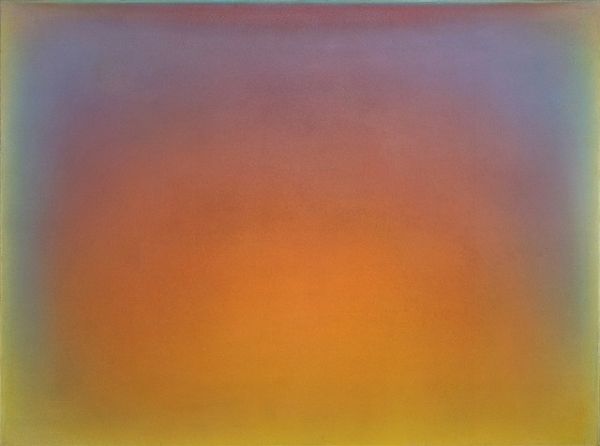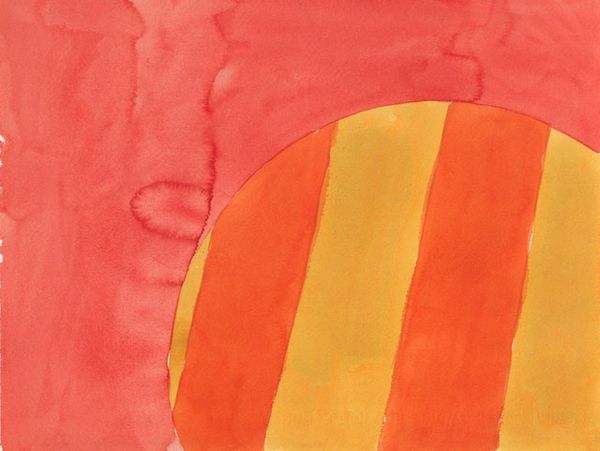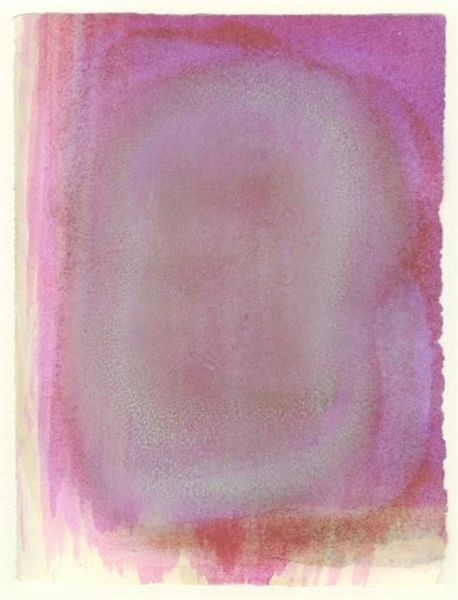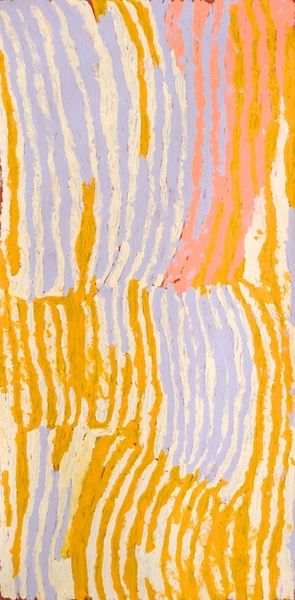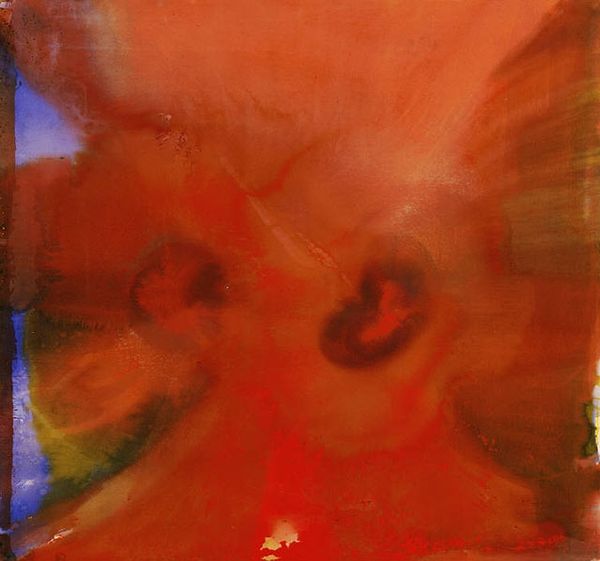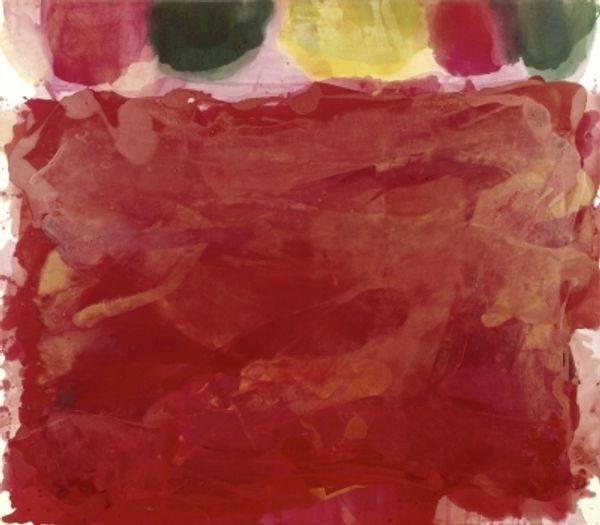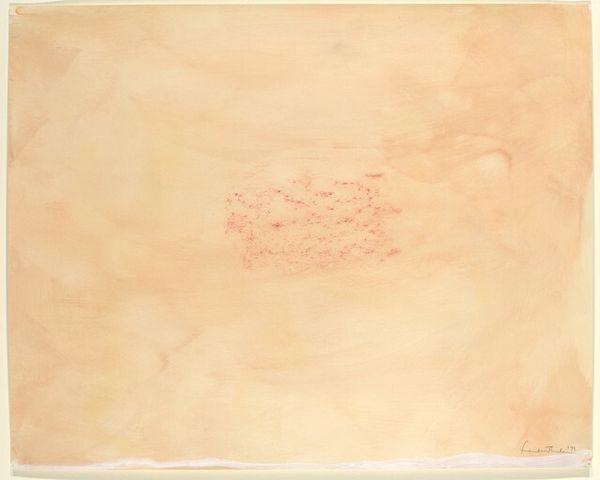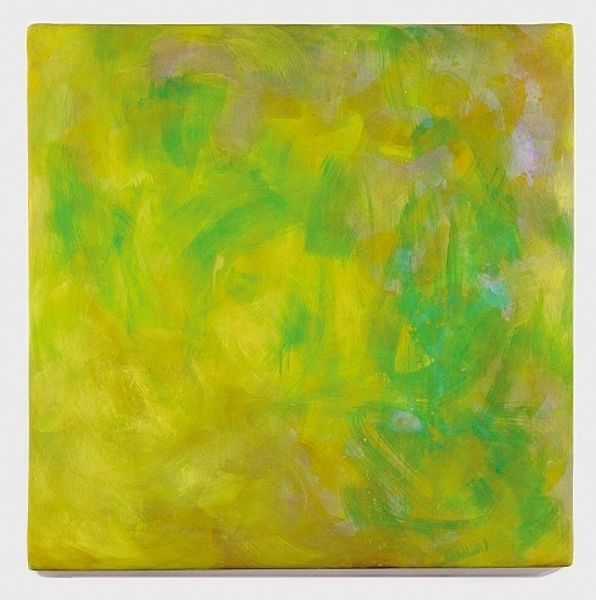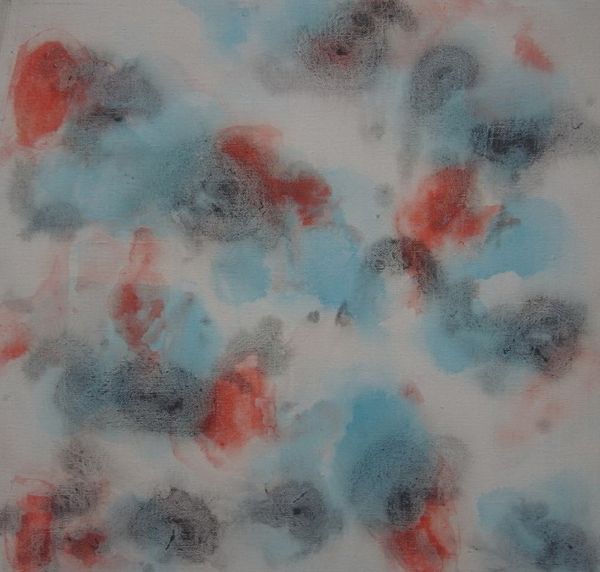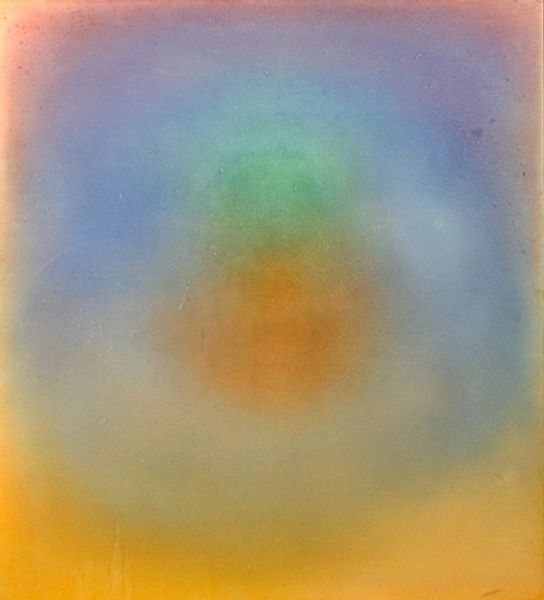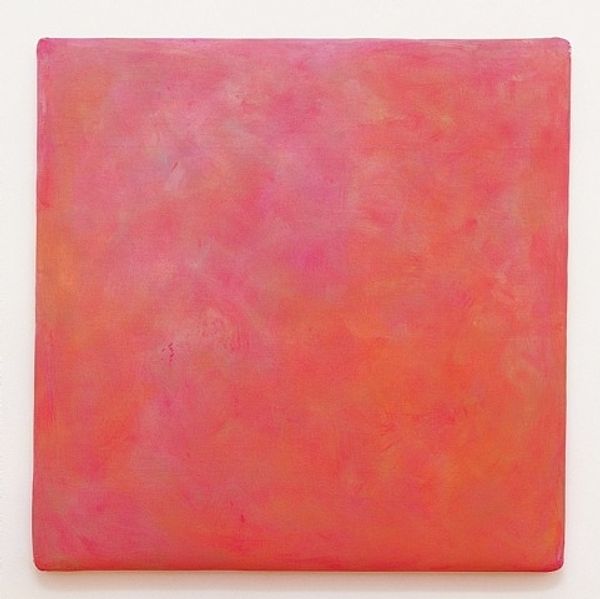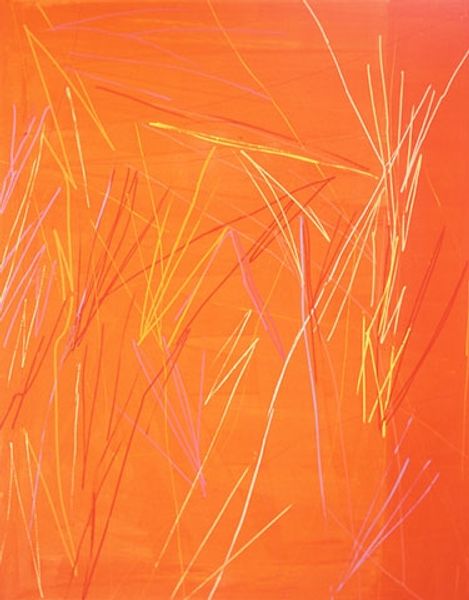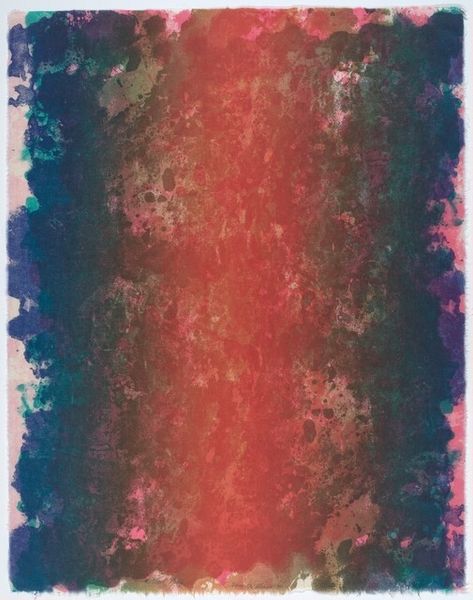
Copyright: Yayoi Kusama,Fair Use
Curator: Wow, that’s intense! At first glance, I feel enveloped by a fiery cloud or sunset, but in a confined, almost claustrophobic way. Editor: I find that interesting. We are looking at “Woman in the Wind,” a mixed-media artwork created in 1977 by Yayoi Kusama, the celebrated Japanese artist known for her obsessive patterns and explorations of psychological themes. Kusama often plays with scale, and while the dimensions here aren’t massive, the immersive effect you mention is palpable. It makes use of bold blocks of oranges and reds, with lighter shades layered and applied around this dominant circular structure in the center, disrupting the surface. Curator: That center has my attention; it feels like a kind of eclipse. Looking at it, it evokes ideas about cycles, femininity, and maybe the raw vulnerability we carry within ourselves as human beings—all filtered through her lens, of course. Kusama’s signature exploration of interiority comes to mind immediately. Editor: Precisely. That circular element can be viewed from a compositional angle: a visual signifier pointing to wholeness while disrupting the unity of the canvas, but then again, given Kusama’s biography, can we consider it the body that she often depicts. What cultural associations and visual metaphors do you think might intersect with the choice of these hot, overwhelming color values here? Curator: Well, thinking of fire again, that blazing orange symbolizes powerful emotions like passion or anger, maybe a feeling of being consumed by the world—or even by one’s own mind, if we consider her experiences. White dots, those organic-looking specks all over the space can also represent her feelings about mental health, as well as being iconic in her art creation, pointing towards hope, possibility, but they don't provide rest either. It keeps moving and growing. Editor: That brings the cyclical energy together. Viewing it as part of a wider study in the patterns in both abstract and semi-representational forms of art that can be deconstructed, or how organic structure becomes visual and cognitive data. The wind also could denote unseen forces around this subject. Curator: In this frame, seeing it through the lens of lived experience of mental distress shifts this abstract work. And to wrap up, for me, seeing through pattern and disruption is to reveal the human behind. Editor: Thank you for offering this new perspective. And so we close observing the power and intensity of formal structure with cultural meaning.
Comments
No comments
Be the first to comment and join the conversation on the ultimate creative platform.

